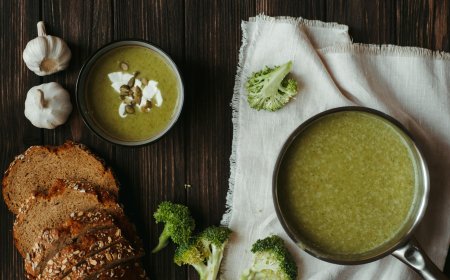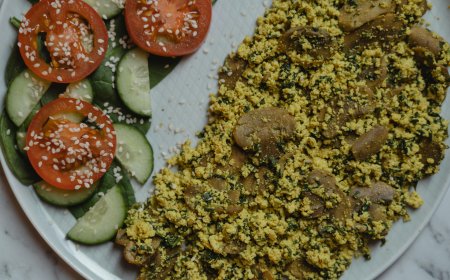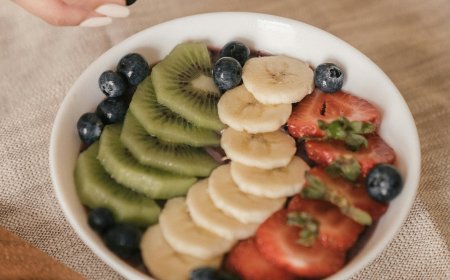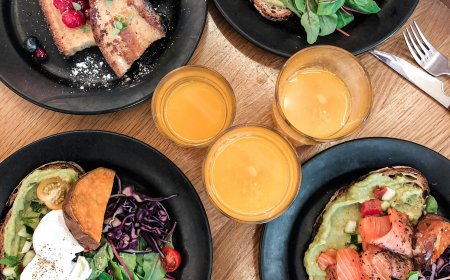“How to Build a Delicious and Nutritious Healthy Diet Plan”
Building a healthy diet plan can seem daunting, especially with the myriad of conflicting information available. However, creating a diet that is both delicious and nutritious is achievable with some thoughtful planning.

1. Understand Your Nutritional Needs
Before diving into meal planning, it’s important to understand your nutritional requirements. These can vary based on factors such as age, gender, activity level, and health goals. Consider consulting with a registered dietitian or nutritionist to get personalized advice. Generally, a balanced diet should include:
- Macronutrients: Carbohydrates, proteins, and fats.
- Micronutrients: Vitamins and minerals.
- Hydration: Adequate water intake.
2. Focus on Whole, Unprocessed Foods
A healthy diet emphasizes whole, unprocessed foods. These foods are rich in essential nutrients and free from additives and excess sugars. Incorporate:
- Fruits and Vegetables: Aim for a variety of colors to ensure a broad spectrum of vitamins and minerals.
- Whole Grains: Choose brown rice, quinoa, oats, and whole-wheat products over refined grains.
- Lean Proteins: Include sources like chicken, fish, beans, lentils, and tofu.
- Healthy Fats: Opt for avocados, nuts, seeds, and olive oil.
3. Create Balanced Meals
A balanced meal includes a mix of macronutrients and micronutrients. Aim for:
- Half of Your Plate: Fruits and vegetables.
- Quarter of Your Plate: Lean protein.
- Quarter of Your Plate: Whole grains.
Incorporating a variety of foods in each meal ensures you get a range of nutrients and keeps your diet interesting.
4. Plan Your Meals and Snacks
Meal planning helps you stay organized and make healthier choices. Consider these tips:
- Plan Weekly: Set aside time each week to plan your meals and snacks. Create a shopping list based on your plan.
- Prep in Advance: Prepare ingredients or meals ahead of time to save time during busy days.
- Healthy Snacks: Keep nutritious snacks like nuts, yogurt, or fruit on hand to avoid reaching for less healthy options.
5. Incorporate Flavorful Herbs and Spices
Herbs and spices can elevate the flavor of your dishes without adding extra calories or sodium. Experiment with:
- Herbs: Basil, cilantro, rosemary, and thyme.
- Spices: Turmeric, cumin, paprika, and cinnamon.
Using fresh or dried herbs and spices can make healthy meals more exciting and enjoyable.
6. Be Mindful of Portions
Portion control is crucial for maintaining a healthy weight and preventing overeating. Use smaller plates and bowls to help manage portion sizes, and listen to your body’s hunger and fullness cues.
7. Stay Hydrated
Hydration is a key component of a healthy diet. Aim to drink at least 8 cups (64 ounces) of water daily. Adjust this amount based on your activity level, climate, and individual needs. Herbal teas and water-rich foods like cucumbers and melons also contribute to hydration.
8. Include a Variety of Foods
Eating a wide range of foods ensures you get a diverse array of nutrients. Mix up your fruits, vegetables, proteins, and grains regularly to keep your diet interesting and nutritionally complete.
9. Practice Moderation, Not Deprivation
A healthy diet doesn’t mean you have to completely eliminate your favorite treats. Instead, practice moderation. Enjoy indulgent foods occasionally while focusing on making healthier choices most of the time.
10. Listen to Your Body
Pay attention to how different foods make you feel. Adjust your diet based on your body’s responses, such as energy levels, digestion, and overall well-being. What works for one person may not work for another, so personalize your diet plan to suit your individual needs.
11. Stay Informed and Motivated
Keep yourself informed about nutrition and healthy eating by reading reputable sources and staying up-to-date with dietary guidelines. Join online communities or support groups for motivation and share recipes and tips with others.
Conclusion
Building a delicious and nutritious diet plan is all about balance, variety, and mindful eating. By focusing on whole, unprocessed foods, planning your meals, and incorporating flavorful herbs and spices, you can create a diet that supports your health goals and satisfies your taste buds. Remember, a healthy diet is not a one-size-fits-all approach but rather a personalized journey towards better well-being.
What's Your Reaction?



















































































